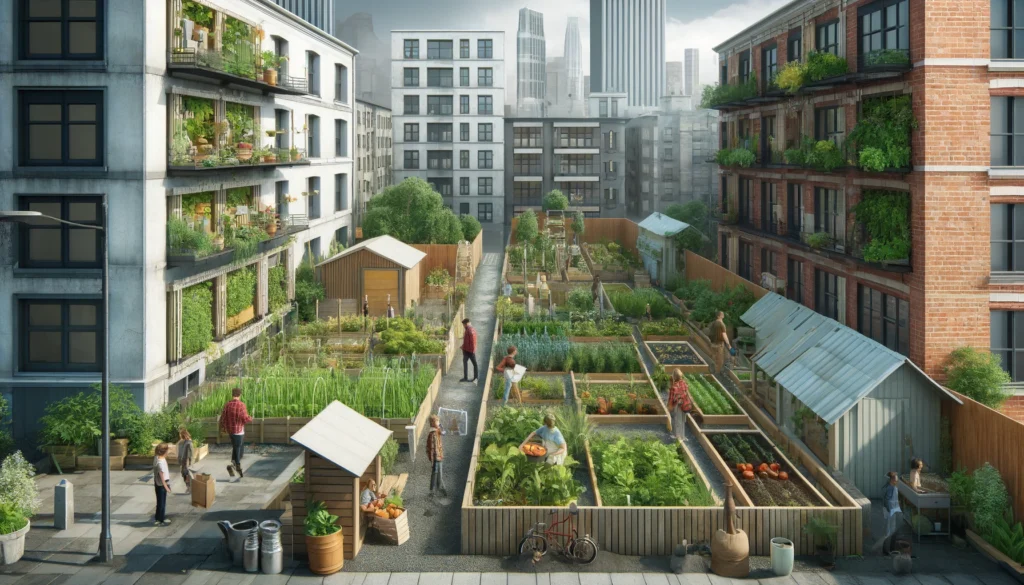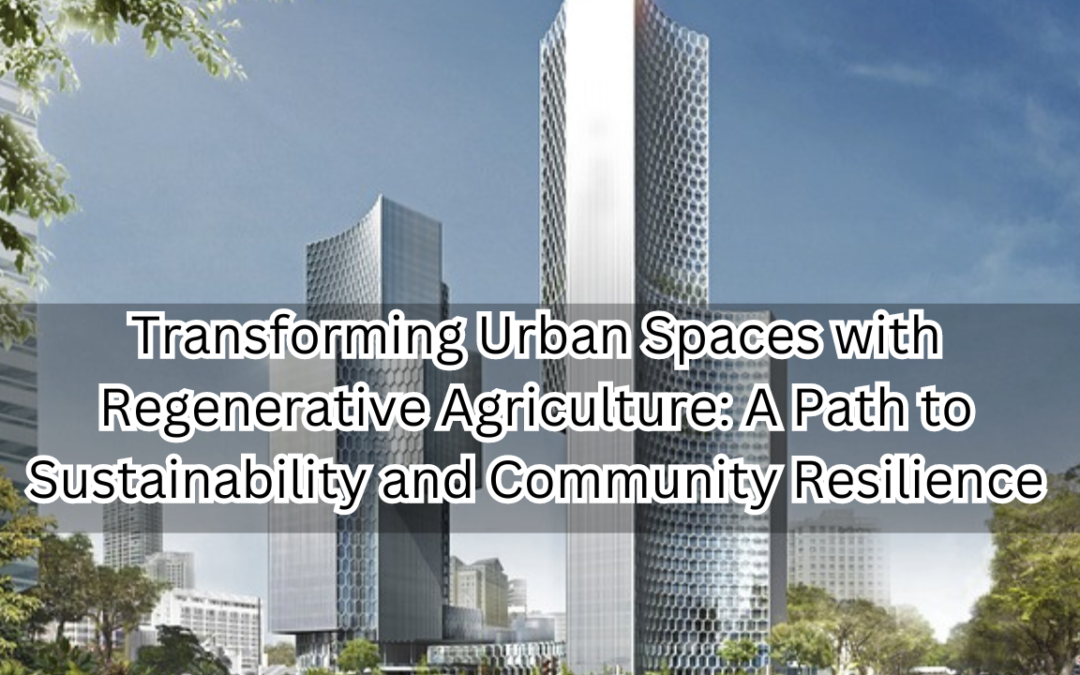Urban Oasis: Regenerative Agriculture Transforms City Spaces
In the heart of the concrete jungle, an extraordinary transformation is underway. Urban spaces, once underutilized and overlooked, are blossoming into lush, productive oases thanks to the principles of regenerative agriculture. This movement is not just about growing food; it’s about revitalizing communities, restoring biodiversity, and building a sustainable future right where the majority of people live: in cities.
In the face of rapid urbanization and the escalating demand for land resources, the quest for sustainable solutions has never been more urgent. Regenerative agriculture emerges as a beacon of hope, offering innovative strategies to enhance food security, bolster environmental sustainability, and foster community resilience in urban landscapes. This article delves into the essence of regenerative agriculture in urban settings, shedding light on its methods, benefits, and the profound impact it can have on our cities.
What is Urban Regenerative Agriculture?
Urban regenerative agriculture is a holistic approach that integrates the principles of ecosystem resilience, biodiversity, and soil health into urban farming practices. Unlike conventional agriculture, which often depletes soil nutrients and harms ecosystems, regenerative agriculture seeks to rejuvenate the earth and create self-sustaining food systems. It encompasses a variety of techniques, including vertical farming, rooftop gardens, community gardens, and urban food forests, all aimed at producing fresh, nutritious food while enhancing the urban environment.
Maximizing Underutilized Spaces for Food Production
A core principle of urban regenerative agriculture is the innovative use of underutilized spaces. Rooftop gardens transform barren roofs into lush, productive green spaces, offering a dual benefit of food production and urban cooling. Similarly, community gardens revitalize brownfields and vacant lots, turning them into vibrant hubs of social interaction and local food production. These practices not only optimize land use but also contribute to the aesthetic and ecological richness of urban areas.
Vertical Farming: A High-Tech Solution
Vertical farming stands out as a cutting-edge aspect of regenerative agriculture. By employing vertical space, it allows for high-density crop production in controlled environments, utilizing advanced techniques such as hydroponics and aeroponics. This method is particularly suited to urban settings, where space is at a premium. It significantly reduces the need for arable land and minimizes food transport distances, thereby cutting down on carbon emissions and enhancing local food security.
The Importance of Soil Health and Biodiversity
In urban regenerative agriculture, maintaining soil health and promoting biodiversity are paramount. Practices such as composting, using cover crops, and implementing integrated pest management enhance soil fertility and encourage a healthy ecosystem. Introducing trees, shrubs, and perennial plants into urban farms not only supports biodiversity but also improves the microclimate, creating cooler and more pleasant urban environments.

The Social and Economic Impact
Regenerative agriculture goes beyond environmental benefits, playing a crucial role in social and economic resilience. Urban farming initiatives empower communities, offering opportunities for education, skill development, and social bonding. They can stimulate local economies by creating jobs and supporting local businesses, thereby promoting food justice and equity in underserved communities.
Embracing the Future with Urban Regenerative Agriculture
As cities continue to grow, integrating regenerative agriculture into urban planning offers a promising path toward sustainable, resilient, and livable urban environments. By transforming unused spaces into productive green areas, urban agriculture not only feeds people but also nurtures the planet. It presents an opportunity to re-envision our urban landscapes as places of abundance and harmony between humans and nature.
In conclusion, urban regenerative agriculture is not just a farming practice; it’s a movement towards creating more sustainable, equitable, and thriving urban communities. As we move forward, it is imperative that we embrace these practices, encourage community participation, and advocate for policies that support urban agriculture. Together, we can turn our cities into bastions of sustainability and resilience, paving the way for a greener, more food-secure future.
Join the Movement
Are you ready to be part of the solution? Whether you’re a seasoned gardener, a community leader, or someone passionate about sustainability, there’s a role for you in urban regenerative agriculture. Get involved with local initiatives, volunteer for community gardens, or start your own project. Together, we can transform our urban landscapes and build a sustainable future for generations to come. Start today by exploring more on our website, signing up for our newsletter, or attending our next workshop. Your journey towards urban greening begins here!
Embark on a Verdant Journey: Enlist with the EAT Community to Cultivate Resilience and Rejuvenate Urban Landscapes Through Regenerative Agriculture
Join the Movement: Become a Part of the EAT Community and Help Us Breathe New Life into Our Cities Through Regenerative Agriculture
Related Articles and Resources:
- Unveiling the Power of Regenerative Agriculture for Climate Resilience
- Embracing Regenerative Agriculture: A Path to Climate Resilience
- The Power of Regenerative Agriculture in Combatting Climate Change
- Green Infrastructure: The Key to Urban Resilience and Sustainability
- Growing More Food On Less Land
- Five Soil Health Principles of NRCS
- Socio-economic Resilience: What is it and how can it be enhanced?
- The future of food and nutrition in a fragile world




I truly savored what you’ve accomplished here. The sketch is elegant, your authored material trendy, however, you seem to have developed some trepidation about what you aim to offer next. Certainly, I shall revisit more regularly, just as I have been doing nearly all the time, in case you uphold this ascension.
Fantastic read! I was especially impressed by the depth provided on the topic, offering a perspective I hadn’t considered. Your insight adds significant value to the conversation. For future articles, it would be fascinating to explore more to dive deeper into this subject. Could you also clarify more about the topic? It caught my interest, and I’d love to understand more about it. Keep up the excellent work!
Stumbling upon this website was such a delightful find. The layout is clean and inviting, making it a pleasure to explore the terrific content. I’m incredibly impressed by the level of effort and passion that clearly goes into maintaining such a valuable online space.
The breadth of knowledge compiled on this website is astounding. Every article is a well-crafted masterpiece brimming with insights. I’m grateful to have discovered such a rich educational resource. You’ve gained a lifelong fan!